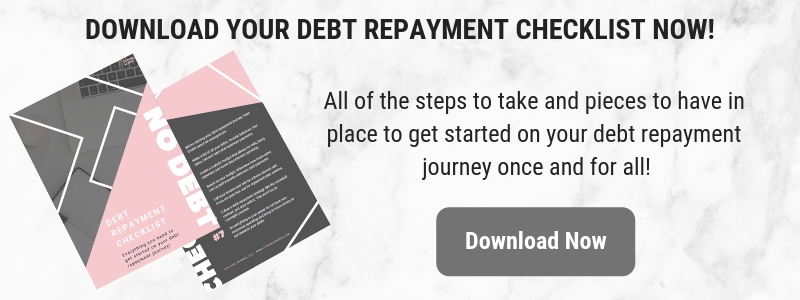Across the CGS community, I’ve been asked numerous times about my opinion on balance transfers. My response is always the same: balance transfers can be incredibly effective, when they’re managed properly. I’ve leveraged balance transfers myself to take care of high interest debt or to leverage large amounts of cash interest-free for a specific amount of time.
When managed properly, balance transfers can save you money, limit the number of different monthly payments you have, reduce stress, and help you on your debt pay-off journey. I’m sharing 5 tricks for successfully managing balance transfers, so you can take advantage and avoid the trap of extra debt after transferring your balances.
5 Tricks for Successfully Managing Balance Transfers
#1 Understand Your Budget and What You Can Afford to Spend
Before you embark on the balance transfer journey, make sure you have a solid budget plan in place. Because the ultimate goal of a balance transfer is to pay your debt off faster without paying as much in interest, you’ll want to know how much you can reasonably afford to put towards paying down your balances.
What we don’t want to happen is you initiating a balance transfer, failing to account for your spending, and then you wind up with even more debt. Instead, get clear on your numbers beforehand and have a game plan in place when you do initiate the balance transfer.
#2 Keep Track of Promotional Interest Dates
0% interest for any amount of time is a blessing. The only downside is not taking advantage of this opportunity to pay off debt before interest starts accumulating. Make sure you’re keeping track of the date when interest starts to kick in. Your goal should be paying off the balance of the card/loan before interest can begin to accrue.
#3 Prioritize the Debt with the Highest Interest Rate
The best-case scenario for successfully managing balances transfers is when you can transfer ALL your balances to one account. Let me explain. Let’s say you have 5 credit cards, all being charged interest, that total $24,000. Being able to transfer all 5 card balances to a single card with a 0% promo interest rate is the best-case scenario. Sure, your monthly payment will be a lot higher with a large balance on one card, but you won’t be charged any more interest. From there, you can make sure you pay the balance off before interest kicks in.
Best-case scenario doesn’t always work out. Your next step would be to transfer as much of your debt as possible to the 0% balance card and then focus your efforts on first paying off any remaining high-interest debt. Once that debt is paid off, you will shift your focus to paying off the promotional debt. The point is to prioritize paying off high interest debt first, whether that’s transferring it to a 0% interest card in full, or just making sure that specific debt is paid off first.
#4 Have a Plan for Unexpected Expenses
Remember how I said that we don’t want to end up in more debt when initiating a balance transfer? Well, a good way to avoid that is by having a plan for unexpected expenses BEFORE they pop up. The best way to plan for that is to have a savings account in place. Before you think about paying off debt or even initiating a balance transfer, prioritize an emergency fund.
Having a savings to refer to when unexpected expenses pop up can help you stay on track with your debt pay off efforts and avoid falling deeper into debt.
#5 Fix the True Issue of Your Original Debt
If you haven’t listened to CGS Podcast 15 – My Debt Free Story and Biggest Takeaways, make sure you check it out. I didn’t get to the true issue of my debt when I paid it off, and it led me into debt a second time. Balance transfers, financial windfalls, none of that will have a lasting impact if you don’t fix the true reason you got into debt in the first place.
Make sure that you recognize and address the patterns, trauma or behaviors that got you into debt. Once those are addressed, you can feel confident knowing that you won’t make the same mistakes. This will help you stay debt free, for the long haul!
Related: 5 Things to Know about Consolidating Debt
As long as you keep the 5 tricks above in mind when pursuing balance transfers, you’ll protect yourself from accruing more debt and wasting more money. However, if you’re not ready to get the items above implemented, hold off on your balance transfer until you are ready. I promise it will be worth it, when you do it right! Have you ever done a balance transfer? How did things turn out for you? Drop a comment to share!
-Raya
The CGS Team






